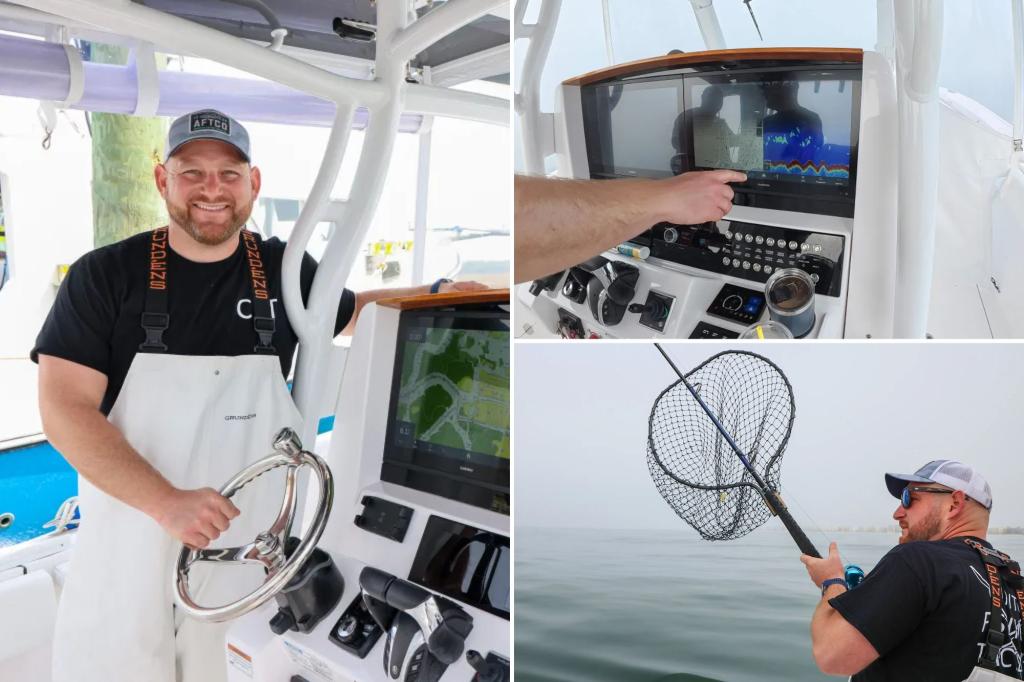Capt. Eric Collins recently boated through “9/10 treacherous fog” off the inlet by Jones Beach to the point he couldn’t lay eyes on half a dozen vessels coming toward his Southport 33FE.
“The weather was horrific as far as fog goes,” Collins, a marina owner and fisherman from Massapequa, told The Post. “We refer to it in the marine world as pea-soup fog, where you could barely see, maybe 50 to 60 feet in front of your boat.”
However, Collins has a difference on board that makes miserable pea-soup days much more manageable and safer — cutting-edge AI by New York City-based tech startup Viam, which enables his instruments to communicate with one another in a highly sophisticated way.
“At no point was today something that I would consider an easy, navigable day,” he said. “This makes it a better experience for everybody on the water.”
These advanced safety features, responsible for spotting where the six boats came from, are just one of Viam’s new offshore advances. The AI firm is also utilizing machine learning to make it exponentially easier to spot and catch fish, serving as an industry game-changer.
“What’s out there now on boats is just a picture with a bunch of green blobs on it,” Viam CEO Eliot Horowitz told The Post.
“Ours is, ‘hey, there’s a 75% chance it’s a fish 300 feet to the right.”
Horowitz, who grew up catching striped bass on the Long Island Sound, has seen firsthand that high-tech hardware, such as HD radar, sonar, and GPS, typically isn’t worth its price tag.
He said it’s because their software interfaces are often anything but user-friendly, to the point that mariners want to smash their radios like Capt. Quint from “Jaws.”
“If you ask most boaters, they don’t really know how to use them very well. They’re hard to manage,” Horowitz said.
Now, the emerging AI from Viam creates easy-to-read data from instrumentation.
A quick glance at a boat’s console shows the predicted location of fish with a clear readout, utilizing metrics such as changes in water temperature, sonar and other real-time probability statistics.
“There’s no scientific GPS that’s going to say ‘go here and you’re guaranteed to catch fish,’ but it’s definitely something that’s taking a lot of the guessing out of it,” said Collins, who is hooked on the tech.
“I think that in the boating world, there’s not anything touching near the significance of this,” Collins said.
The system can even predict when boat parts may need repair or replacement, modifying things to “a 20-minute fix instead of a two-week fix,” according to Horowitz.
‘A ChatGPT for boating’
Viam’s breakthroughs are still in shallow water as opposed to the potential they could bring in the coming years, according to Collins.
“I see this becoming a ChatGPT for boating that can start networking vessels together,” he said, adding that it will likely appeal to the Coast Guard, the operator of the Staten Island Ferry
The captain’s prediction is close to what Horowitz has in the works — something he described as “a Waze for boaters.”
Viam is looking to link boats to the same system to provide real-time safety updates on the water in the same way Waze notes traffic and road hazards/
Horowitz said the Jones inlet, where Collins recently fought through the intense fog, is a perfect example.
“Like many inlets in Long Island, it can get dangerous at times because after every storm, the sand gets pushed around.”
“One of the things we’re working on with a different customer is actually getting users real-time maps of the ocean floor,” he said, adding that sharper technology to fish in foggy conditions is in the works as well.
The long-term goal for Viam, which also operates outside the aquatic space, is to be able to identify different marine life in the water, from sharks to fish and whales.
“We think we can get there, which would be cool,” said Horowitz. “One of my huge things that I care about is getting more people to enjoy the water.”


